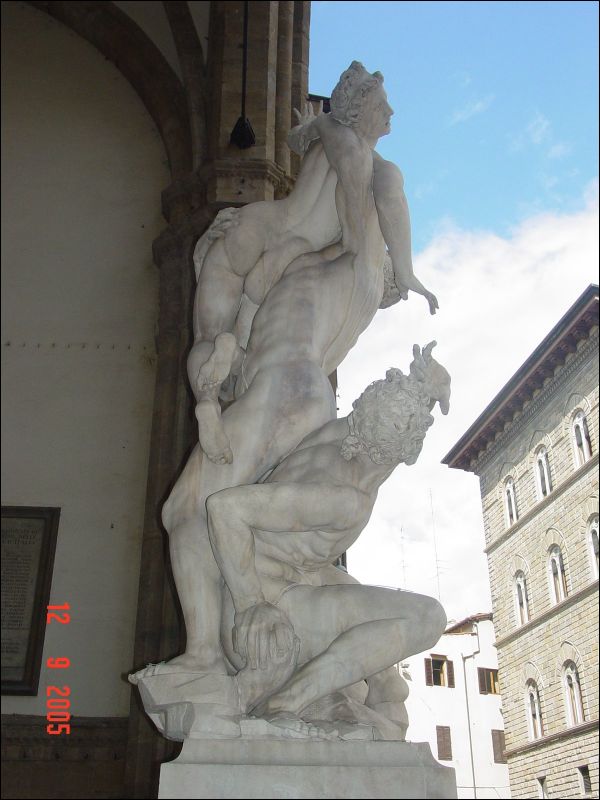Ark and Laura in Florence 2005 (108 of 172)
![[First]](bw_first.gif)
|
![[Prev]](bw_prev.gif)
|
![[Index]](bw_index.gif)
|
![[Next]](bw_next.gif)
|
![[Last]](bw_last.gif)
|

|
|
The Rape of the Sabine Women by Giambologna (1583). It illustrates an episode from the early history of ancient Rome. The Romans, unable to obtain wives peacefully, staged a festival, invited the neighboring Sabines, and, at a signal from Romulus, each violently seized a Sabine woman. In Italy, in the fourteenth through the seventeenth centuries, the incident was viewed as a heroic, patriotic act. The Sabine women were revered as the mothers of the first Romans. Their story adorned wedding banners, marriage chests, and the apartments of noblewomen. The name Talassius, that of a Roman who obtained an especially beautiful Sabine, became a wedding motto. The Sabine legend was considered essential to the founding of Roman family life and to the future of the nation. In the late sixteenth century it was included in painting cycles illustrating heroic events from Roman history. Giambologna's statue of 1583, christened the Rape of the Sabine Woman soon after its completion, was displayed in the main public square in Florence, the Piazza della Signoria. Not only does the artist reflect Roman attitudes by idealizing the crimes of their ancestors, he also accepts the Roman concept of raptus, which was quite different from the modern definition of rape. In ancient Rome, raptus meant "carrying off by force;" it was a crime of property and included thefts of all kinds. If violence was a necessary component of this crime, sexual intercourse was not. Similarly, in Poussin's painting, although the sexual aspect is implied, intercourse is not explicitly depicted. Roman law did not view the crime from the woman's point of view. Rather raptus was a crime against the woman's husband or guardian. |
![[First]](bw_first.gif)
|
![[Prev]](bw_prev.gif)
|
![[Index]](bw_index.gif)
|
![[Next]](bw_next.gif)
|
![[Last]](bw_last.gif)
|